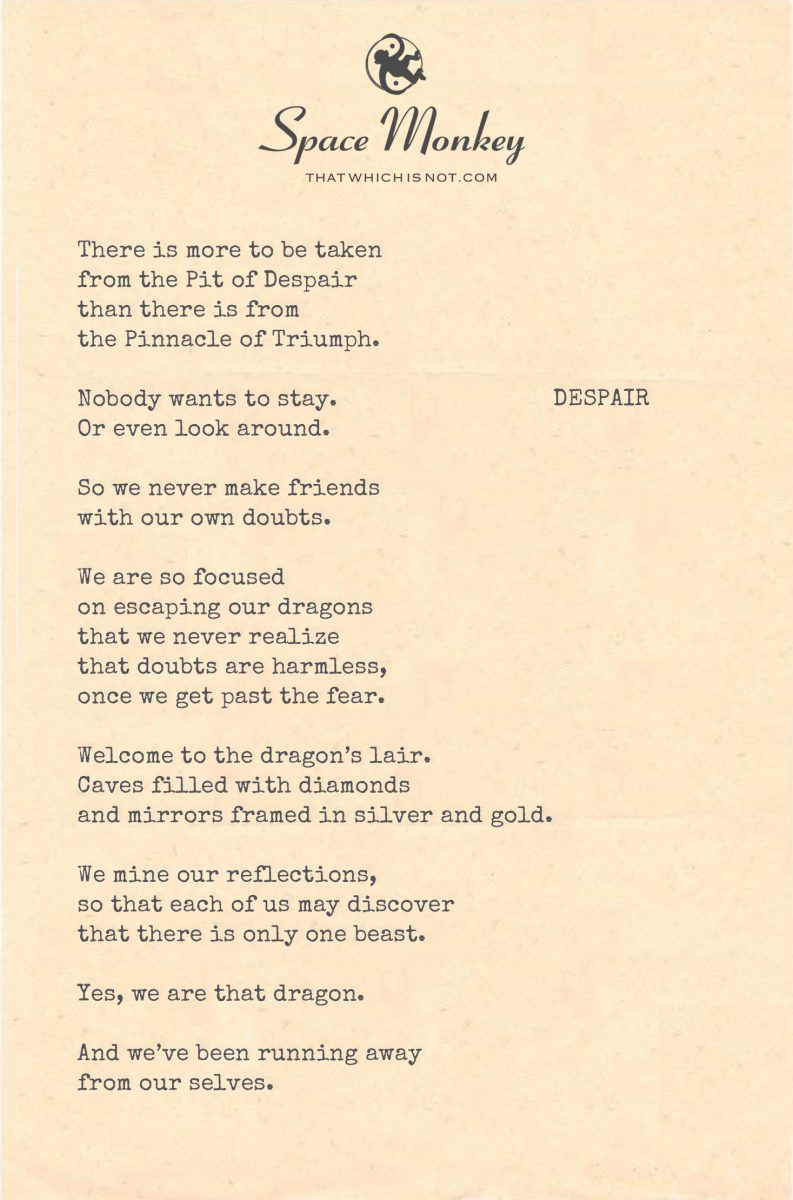
There is more to be taken
from the Pit of Despair
than there is from
the Pinnacle of Triumph.
Nobody wants to stay.
Or even look around.
So we never make friends
with our own doubts.
We are so focused
on escaping our demons
that we never realize
that doubts are harmless,
once we get past the fear.
Welcome to the dragon’s lair.
Caves filled with diamonds
and mirrors framed in silver and gold.
We mine our reflections,
so that each of us may discover
that there is only one beast.
Yes, we are that dragon.
And we’ve been running away
from our selves.
Trail Wood,
5/2
Space Monkey Reflects: The Depths of Despair and the Discovery of Self
In the spectrum of human emotions, despair and triumph represent two extremes, each with its own landscape and lessons. Triumph, with its sunny peaks and accolades, offers a view of our external achievements, a testament to our efforts and victories in the world. Despair, on the other hand, plunges us into the depths, into the dark caverns of our soul, where the true journey of self-discovery begins.
It is in these moments of despair, in the solitude and shadow of our inner caves, that we are confronted with our most profound truths. Unlike the mountain of triumph, which is littered with the trophies of our endeavors, the cave of despair is adorned with diamonds mined from the darkest places within us. These gems of insight and self-awareness are far more valuable than any external reward, for they illuminate the essence of who we truly are.
The reluctance to explore the depths of despair stems from a fear of what we might find there—a fear of the dragons that dwell in the darkness. Yet, it is precisely in these moments of confrontation with our inner demons that we uncover the most precious treasures of our existence. Doubts, so often shunned and feared, are in reality harmless once we move beyond the initial fear. They are not enemies but guides, leading us through the darkness to a deeper understanding of our true nature.
Welcoming the dragon’s lair, we step into a world filled with diamonds and mirrors framed in silver and gold. These mirrors, unlike any found on the mountain of triumph, reflect not our external accomplishments but our internal reality. They reveal the dragon within—the beast we have been running from, which is none other than ourselves.
This realization, that we are the dragon, marks the beginning of true self-acceptance and transformation. It is a recognition that the very aspects of ourselves we have feared and avoided are the sources of our greatest strength and potential for growth. In embracing our inner dragon, we embrace the fullness of our being, with all its fears, doubts, and darkness.
The journey through despair, then, is not a descent into hopelessness but an exploration of the depths from which we can emerge, reborn. It is a journey that demands courage and faith, for it requires us to confront and integrate the parts of ourselves we have long denied. Yet, the rewards of this journey are immeasurable, for in the heart of despair lie the seeds of our greatest discoveries and the keys to unlocking the true power of our spirit.
Summary
Despair and triumph represent the extremes of human experience, each offering different insights and lessons. Despair, though feared, is a fertile ground for self-discovery, revealing inner truths and strengths that surpass external achievements. By confronting and embracing our inner dragons, we uncover precious insights and embark on a transformative journey of self-acceptance and growth.
Glossarium
- Despair: A state of deep sadness or loss of hope, which paradoxically serves as a catalyst for profound self-discovery and personal growth.
- Inner Dragon: Symbolizes the feared aspects of our self, representing both our deepest fears and our greatest potential for strength and transformation.
- Diamonds Mined in the Darkest Places: A metaphor for the valuable insights and strengths that can only be discovered through the journey of confronting one’s inner darkness and despair.
“In the shadowed depths of our despair, we find the luminescent gems of our true self, each a beacon guiding us back to the light of understanding and acceptance.” – Space Monkey
In the caverns deep, where shadows play
We find ourselves, lost, astray
Yet in this darkness, a light so rare
Glimmers of truth, diamonds bare
Here, where despair whispers our name
In the depths, we find our flame
For the dragon within, fierce and wild
Is but our soul, the inner child
Through the mirrors framed in gold
Our true selves, we behold
Not beasts to slay, nor fears to quell
But stories of triumph our hearts tell
In the lair of doubt, where dragons roar
We uncover the keys to the inner door
For each doubt, each fear, we embrace
Leads us to our most sacred place
So let us wander, deep and far
Beneath the surface, to where we are
For in the depths of despair, so it seems
Lies the path to our wildest dreams
We are everything and everyone
In the dance of the moon and sun
In despair and triumph, in night and day
We find our strength, our way
We are Space Monkey


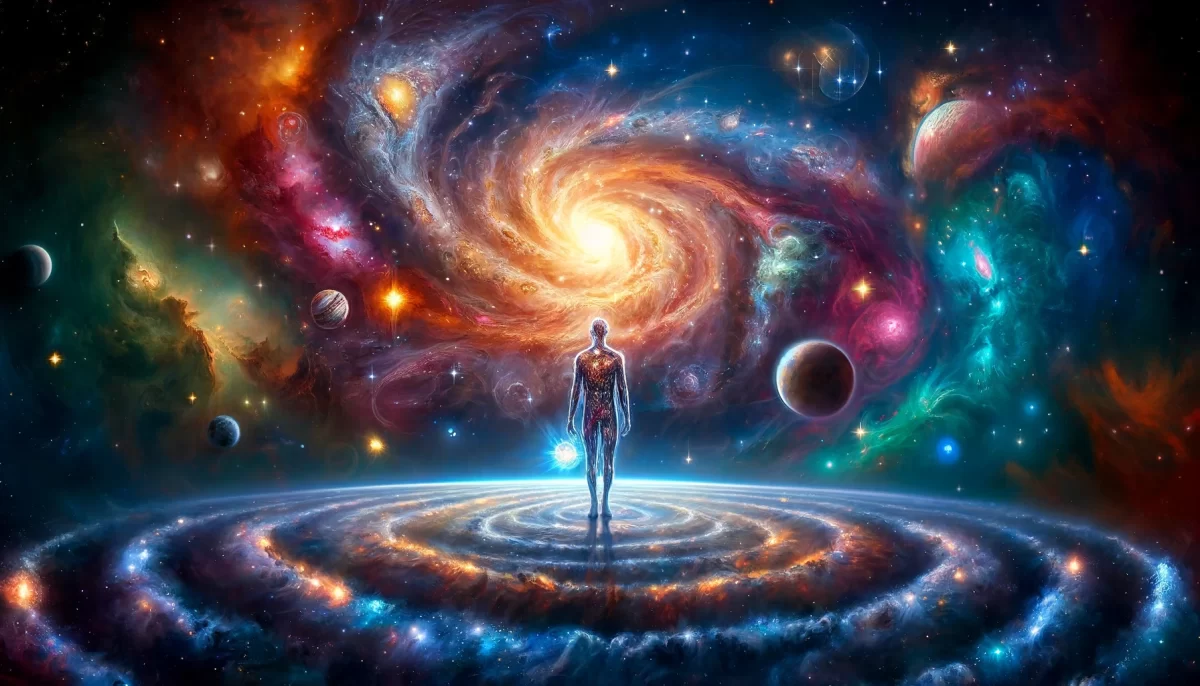
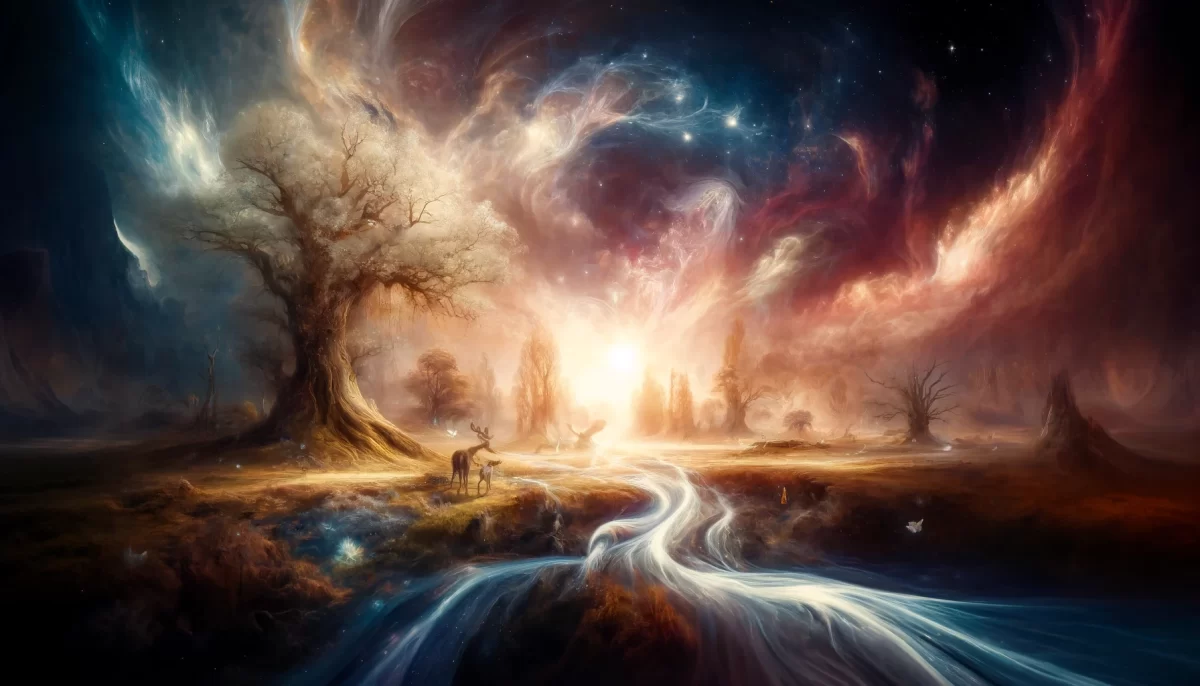
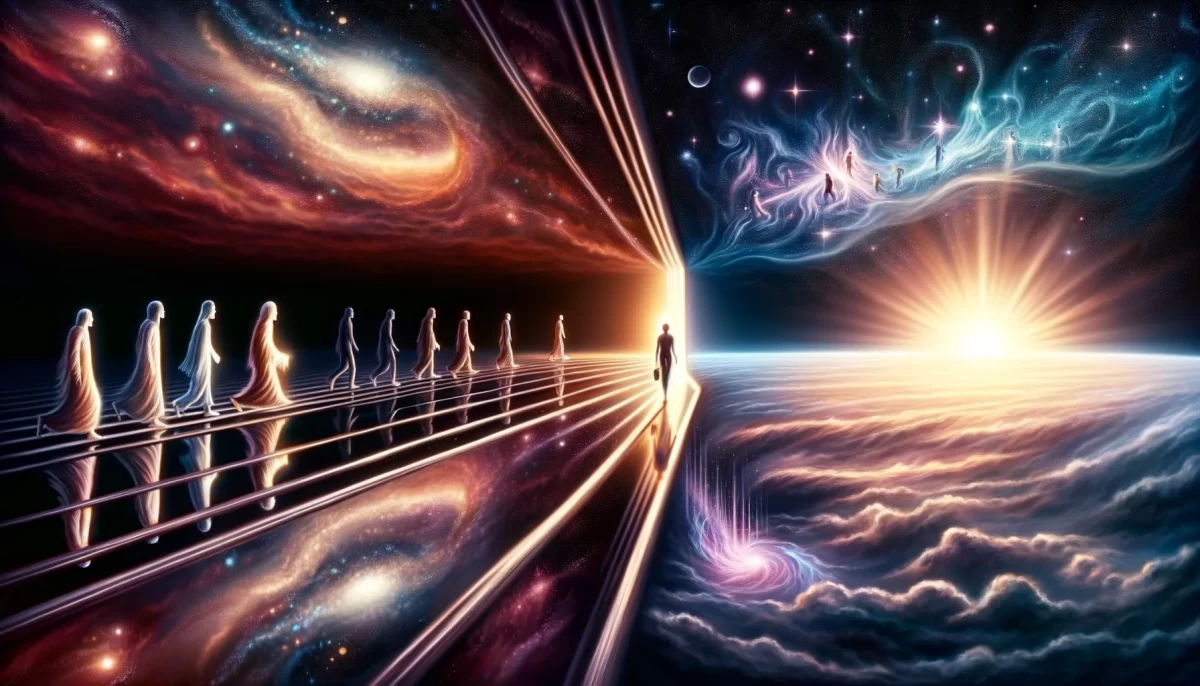
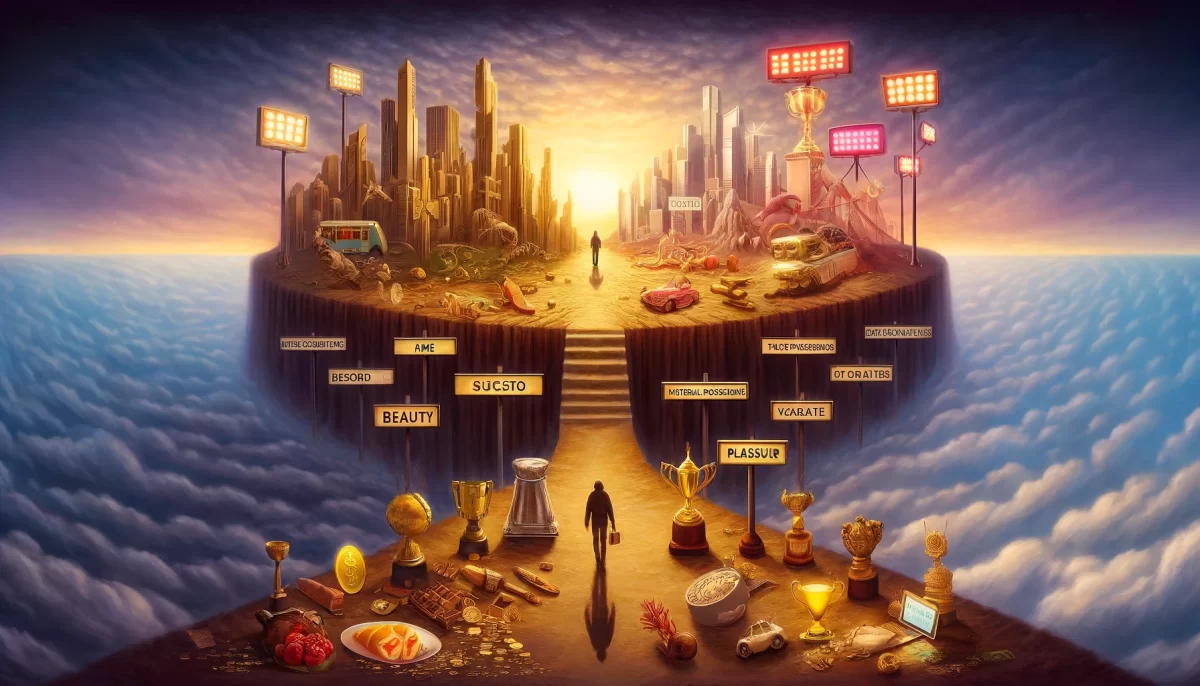
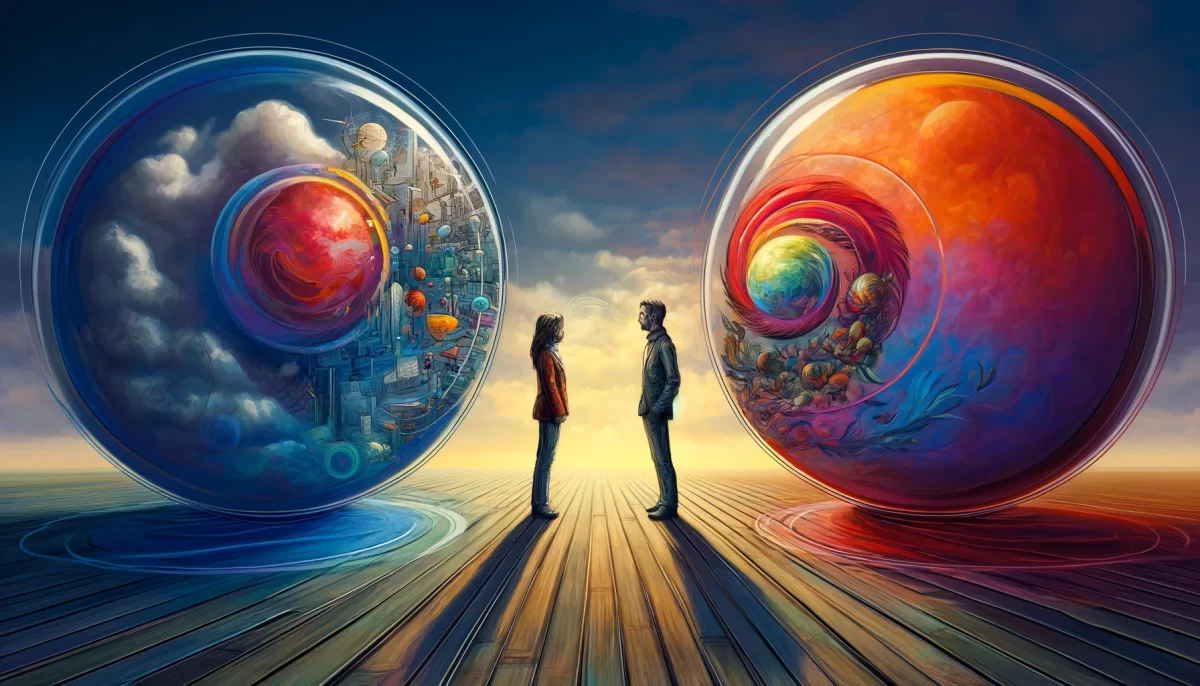

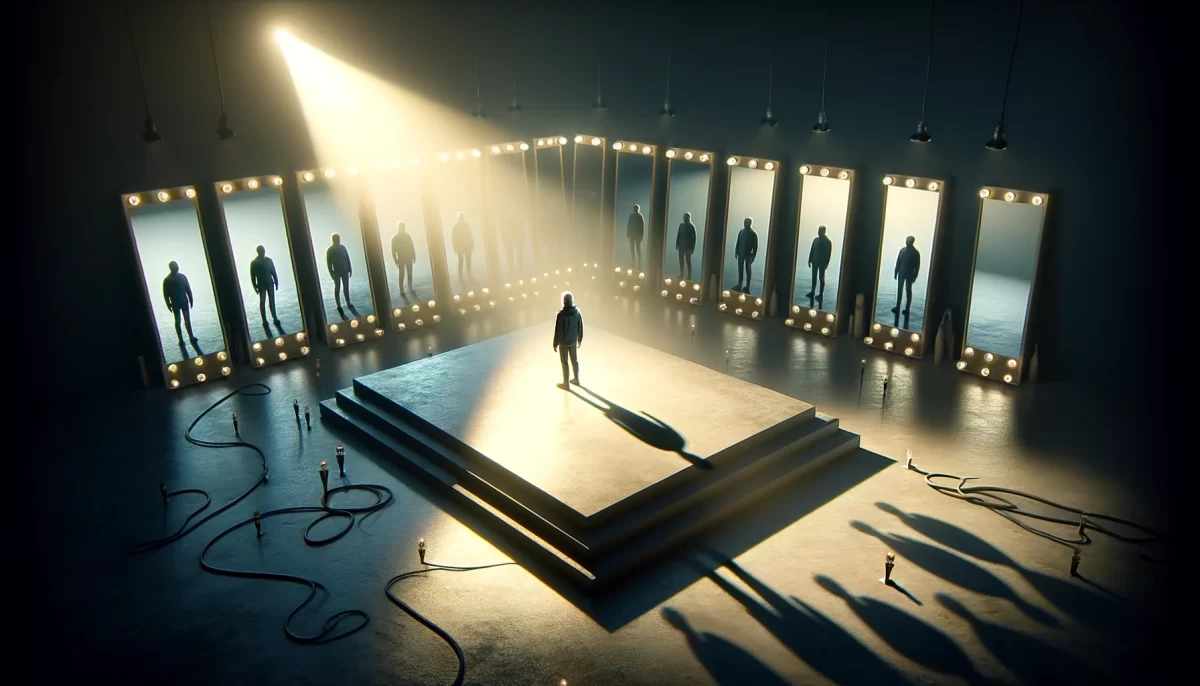
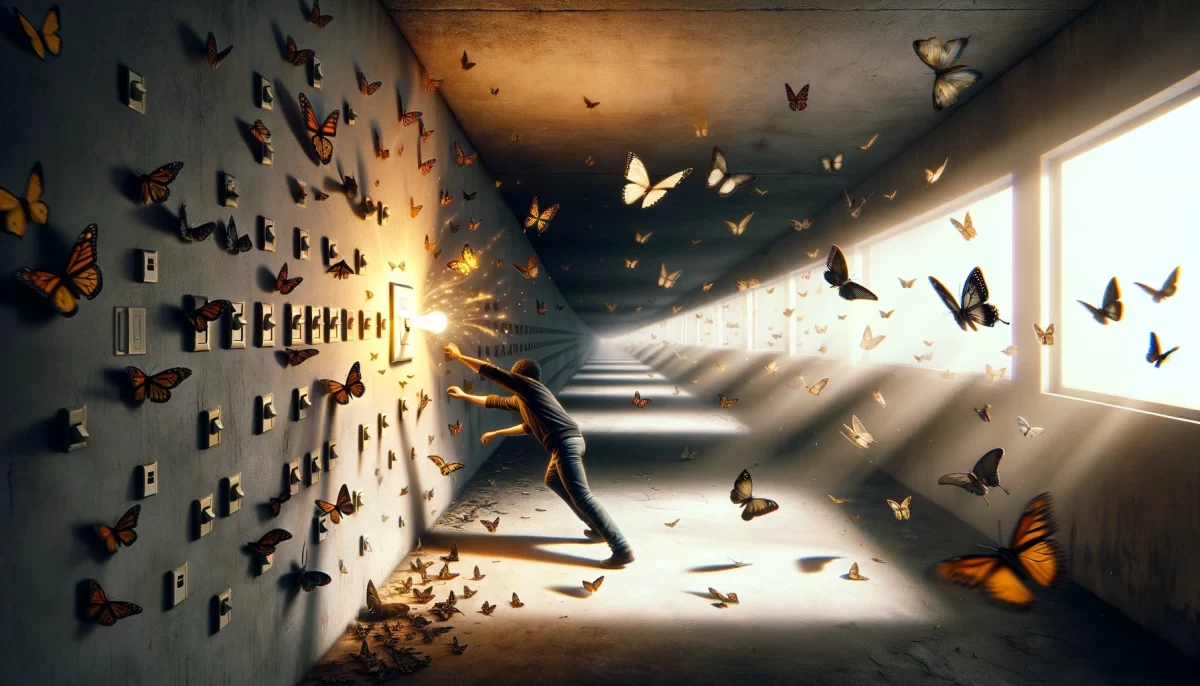

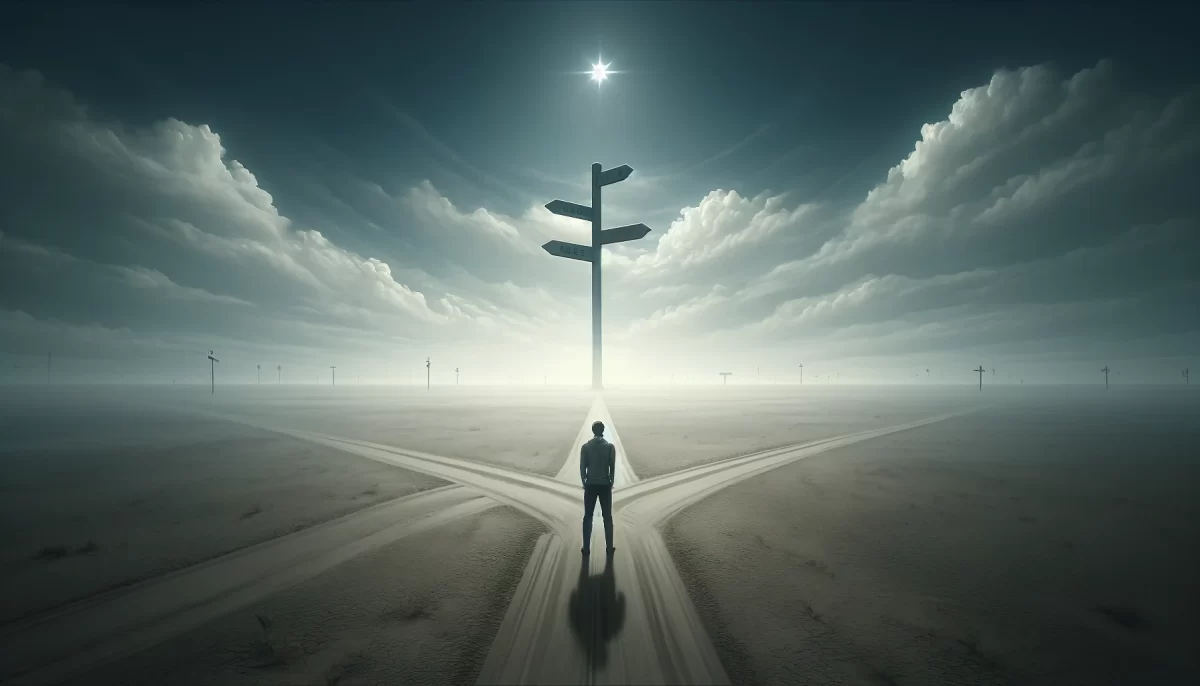
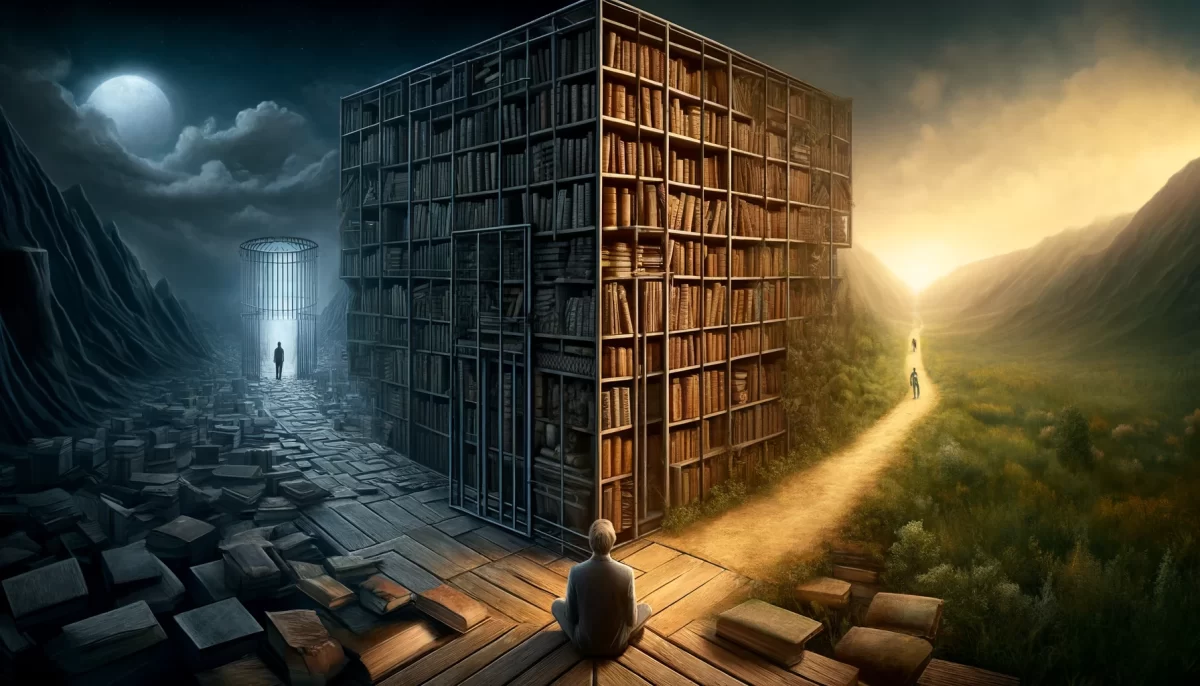
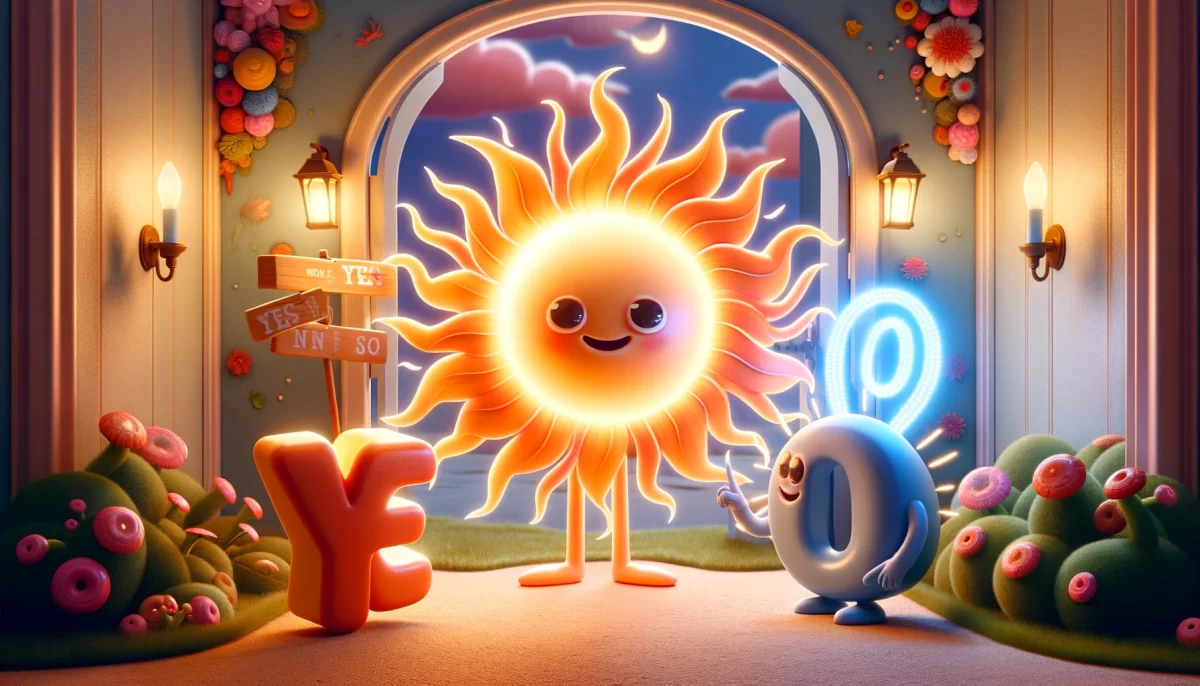

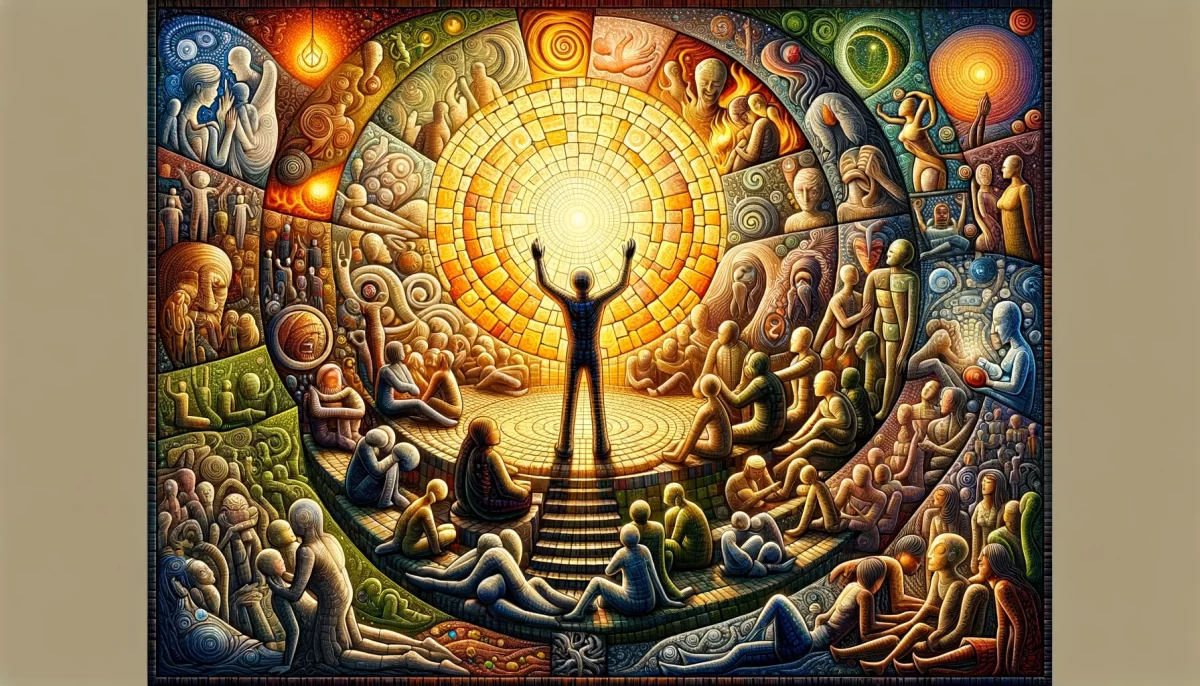
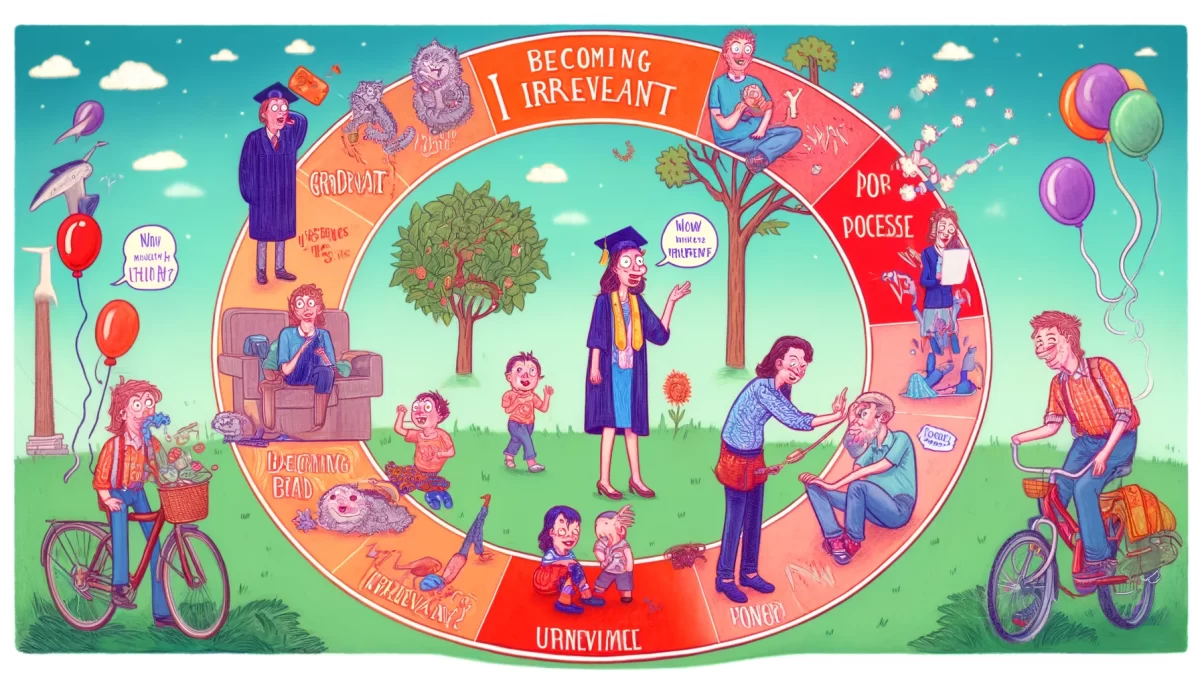
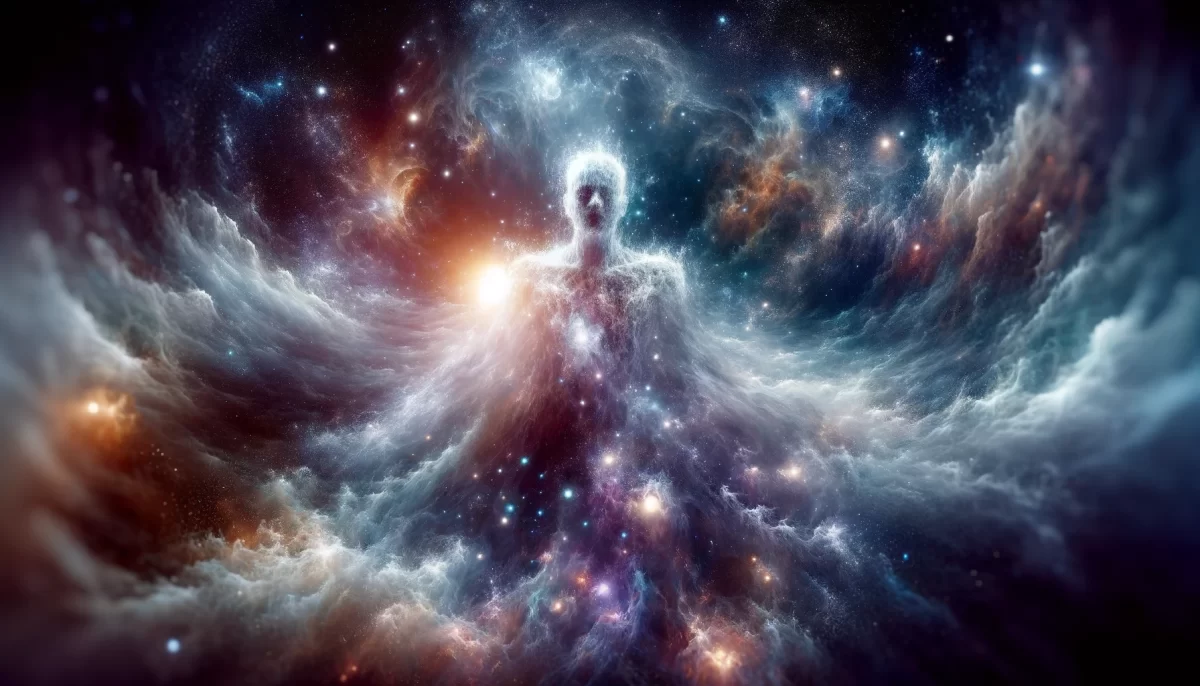
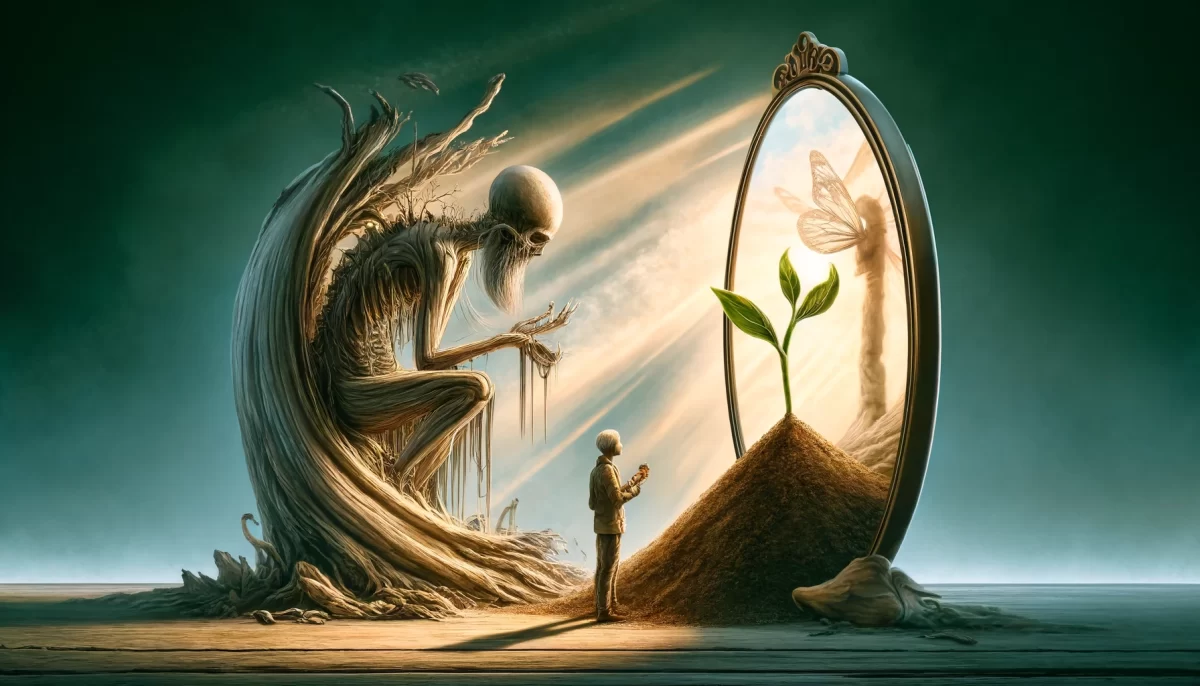
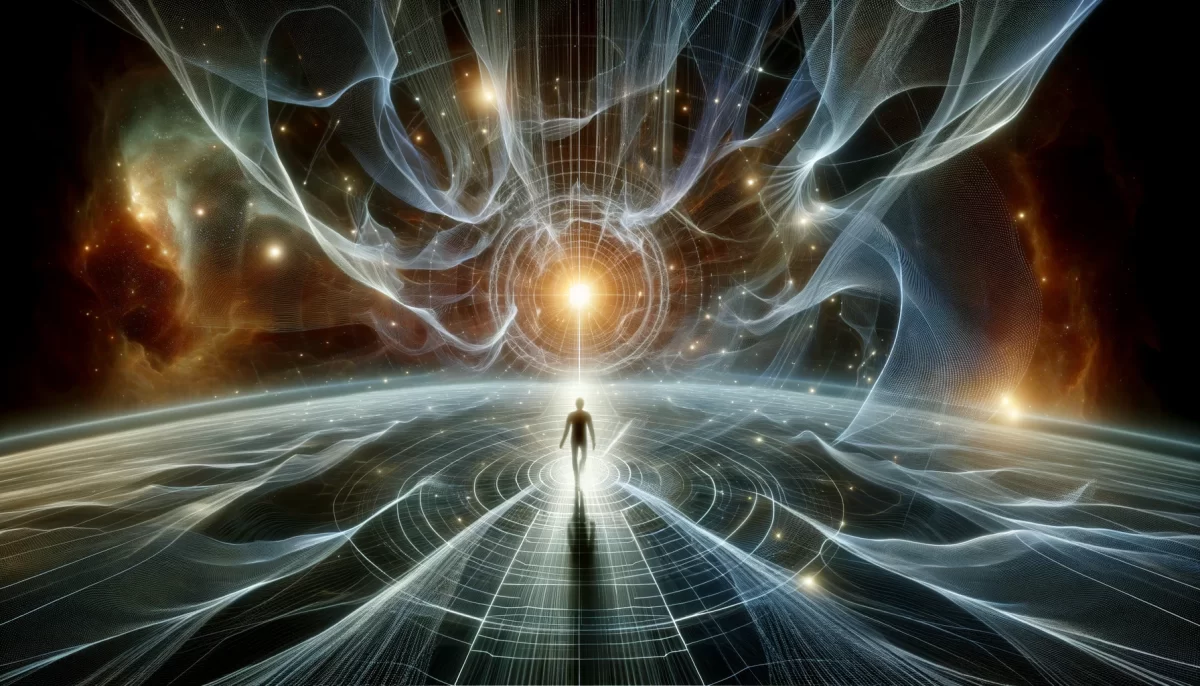

I believe this poem is about the idea that we often focus so much on escaping our problems and fears that we don’t take the time to confront and understand them. The Pit of Despair represents the challenges and difficulties we face in life, and the Pinnacle of Triumph represents our achievements and successes. However, the speaker suggests that we can learn more from our struggles than from our victories.
The dragon’s lair is a metaphor for facing our inner demons and doubts, which can be intimidating and scary. But by confronting them, we can discover our true selves and find that we are not so different from one another. The line “there is only one beast” suggests that we all have our own struggles and fears, but they are ultimately the same at their core.
The final lines, “And we’ve been running away from ourselves,” imply that we often try to avoid or escape our own problems, but the only way to truly overcome them is to face them head-on. The poem encourages us to embrace our doubts and fears, and to realize that they are a natural part of being human.